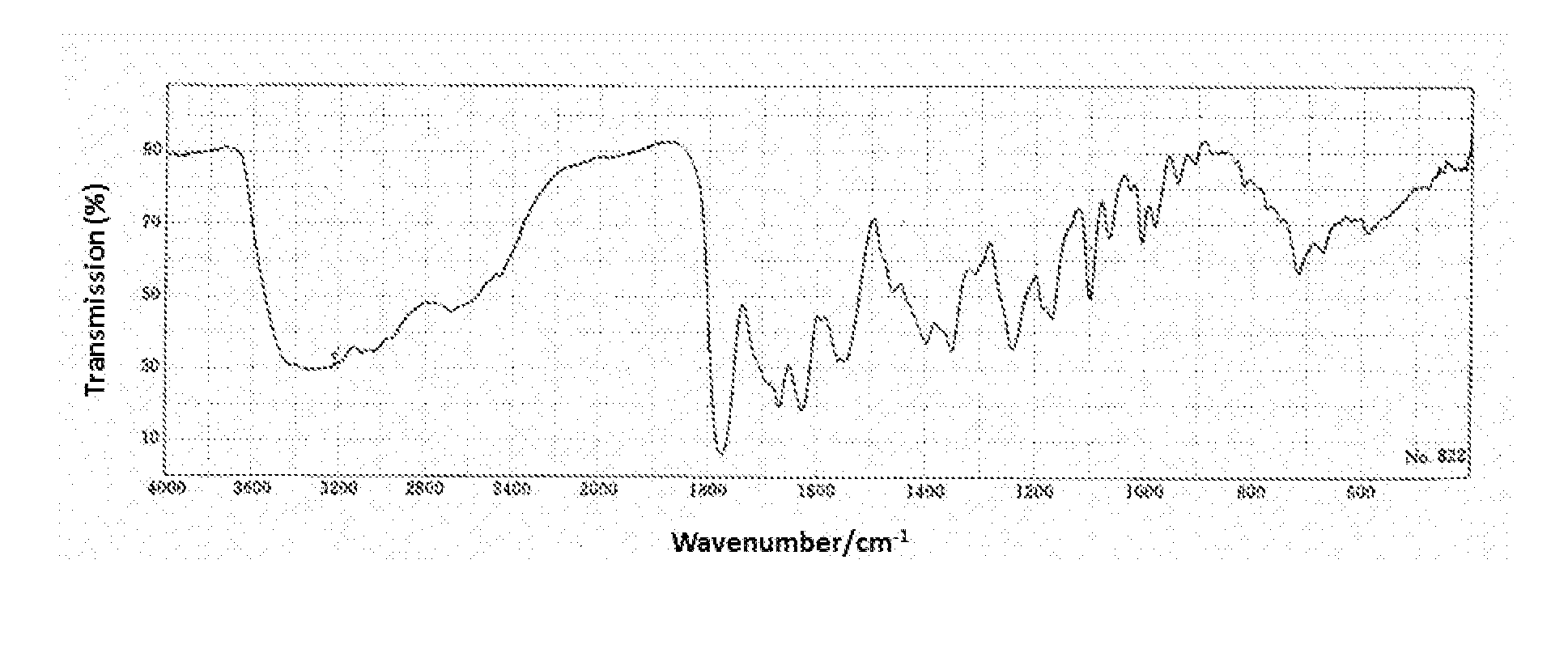Process for purifying cefotiam hydrochloride
a technology of cefotiam hydrochloride and cefotiam hydrochloride, which is applied in the field of process for purifying cefotiam hydrochloride, can solve the problems of low yield residual solvent harming the human body, and low purity of cefotiam hydrochloride prepared by the method
- Summary
- Abstract
- Description
- Claims
- Application Information
AI Technical Summary
Benefits of technology
Problems solved by technology
Method used
Image
Examples
example 1
[0062]10 g of crude cefotiam hydrochloride prepared in accordance with CN 101633666 B was taken, where the content of cefotiam measured by High Performance Liquid Chromatography was 75%, and the content of polymers measured by the gel chromatography system was 3%. The crude cefotiam hydrochloride was dissolved in 200 ml water, treated with 20 ml of 1M sodium bisulfate aqueous solution at a temperature of 30° C. for 2 hours. Then the mixture cooled down to room temperature and precipitated. An aqueous filtrate was obtained after filtration.
[0063]Ethyl acetate was added to the above aqueous solution for extraction twice, where each time the solvent used accounted for 40% of the volume of said aqueous solution. The mixture was sufficiently stirred, allowed to stand, and then the organic phase was separated to obtain an aqueous phase containing cefotiam hydrochloride.
[0064]The aqueous solution of cefotiam hydrochloride obtained was warmed to 45° C. for concentration. The solution was co...
example 2
[0067]10 g cefotiam hydrochloride crude drug (JiangSu jiuzhitang Biological Products Co., Ltd., year of production: August 2010) was taken, where the content of cefotiam measured by High Performance Liquid Chromatography was 79.5%, and the content of polymers measured by a molecular exclusion method was 0.5%. The crude cefotiam hydrochloride was dissolved in 150 ml water, treated with 15 ml of 2M aqueous potassium bisulfate at a temperature of 40° C. for 1 hour, and then cooled to room temperature. A small amount of precipitates came out, and an aqueous filtrate was obtained after filtration.
[0068]To the above aqueous solution, cyclohexane was added for extraction three times, where each time the volume of the solvent used accounted for 30% of the volume of the aqueous solution. The mixture was sufficiently stirred, and allowed to stand. Then the organic phase was separated to obtain an aqueous phase containing cefotiam hydrochloride.
[0069]The cefotiam hydrochloride aqueous solution...
example 3
[0071]10 g cefotiam hydrochloride crude drug (Shanghai ASIA Pioneer Pharmaceutical Co., Ltd., batch number 20080912) was taken, where the content of cefotiam measured by High Performance Liquid Chromatography was 77.5%, and the content of polymer measured by a molecular exclusion method was 2.5%. The cefotiam hydrochloride crude product was dissolved in 250 ml water, treated with 30 ml of 1M aqueous potassium bisulfate at a temperature of 35° C. for 3 hours, and then cooled to room temperature. A small amount of precipitates came out, and an aqueous filtrate was obtained after filtration.
[0072]To the above aqueous solution a mixed solvent of 1:1 cyclohexane and ethyl acetate was added for extraction three times, where each time the volume of the solvent used accounted for 25% of the volume of the aqueous solution. The mixture was sufficiently stirred, and allowed to stand. Then the organic phase was separated to obtain an aqueous phase containing cefotiam hydrochloride.
[0073]The cef...
PUM
| Property | Measurement | Unit |
|---|---|---|
| temperature | aaaaa | aaaaa |
| temperature | aaaaa | aaaaa |
| time | aaaaa | aaaaa |
Abstract
Description
Claims
Application Information
 Login to View More
Login to View More - R&D
- Intellectual Property
- Life Sciences
- Materials
- Tech Scout
- Unparalleled Data Quality
- Higher Quality Content
- 60% Fewer Hallucinations
Browse by: Latest US Patents, China's latest patents, Technical Efficacy Thesaurus, Application Domain, Technology Topic, Popular Technical Reports.
© 2025 PatSnap. All rights reserved.Legal|Privacy policy|Modern Slavery Act Transparency Statement|Sitemap|About US| Contact US: help@patsnap.com


